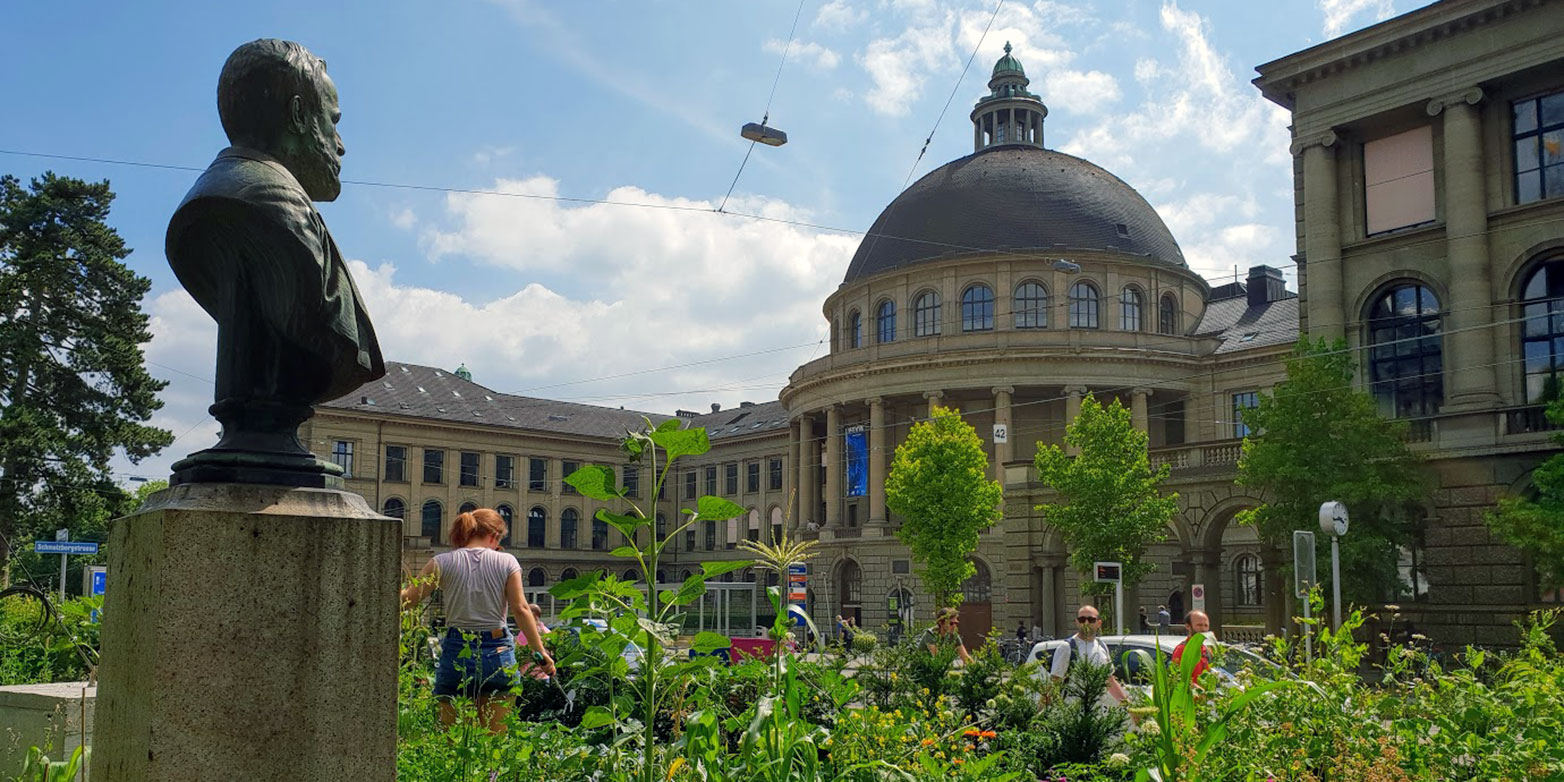Gardens and outdoor spaces
Studying and working at ETH Zurich is demanding. If you like to relax in nature, you will find plenty of options around the university. Public gardens, green areas and outdoor spaces make the ETH Zurich campus grounds at Zentrum and H?nggerberg pleasant places to spend time and relax.
ETH Zurich’s outdoor and green spaces include spacious public gardens and squares as well as quiet corners and calm oases for reflection or discussion with fellow students, researchers, and colleagues.
Impressions
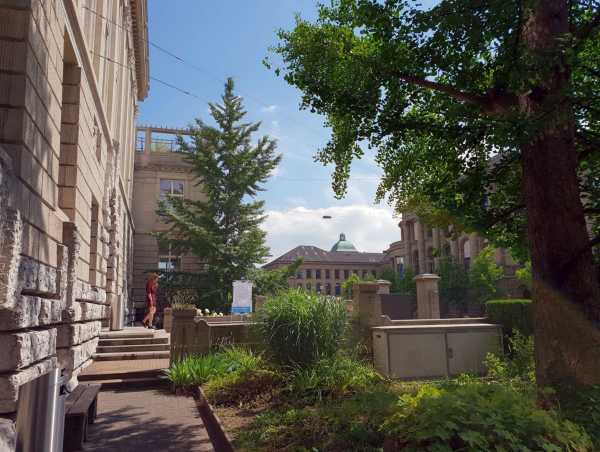 Spectacular: the gardens and green fa?ades of the LFW building. (Photograph: Florian Meyer)
Spectacular: the gardens and green fa?ades of the LFW building. (Photograph: Florian Meyer)
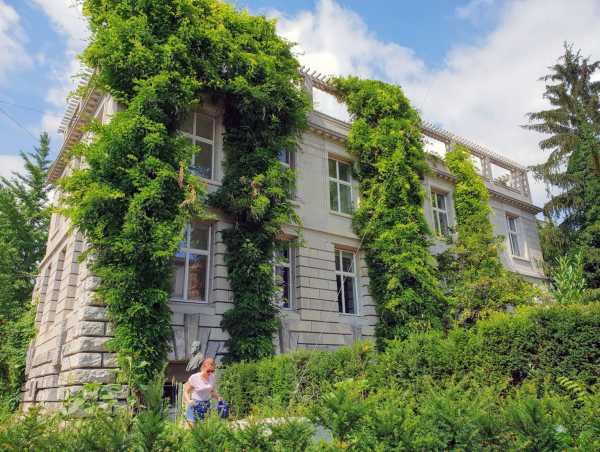 Quiet corners for discussion around the ETH main building. (Photograph: Florian Meyer)
Quiet corners for discussion around the ETH main building. (Photograph: Florian Meyer)
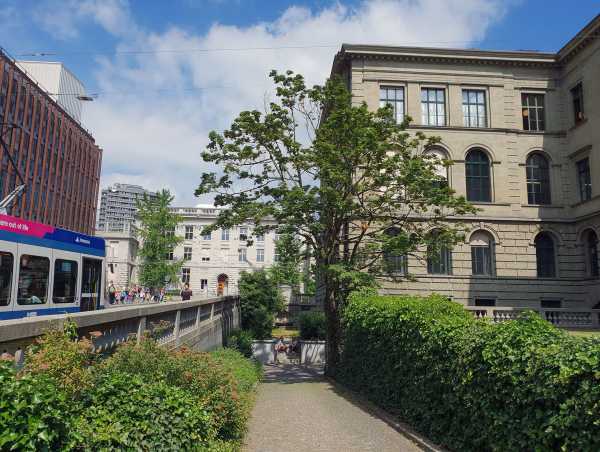 Interaction is part of studying: a bench on the Polyterrasse. (Photograph: Gian Marco Castelberg)
Interaction is part of studying: a bench on the Polyterrasse. (Photograph: Gian Marco Castelberg)
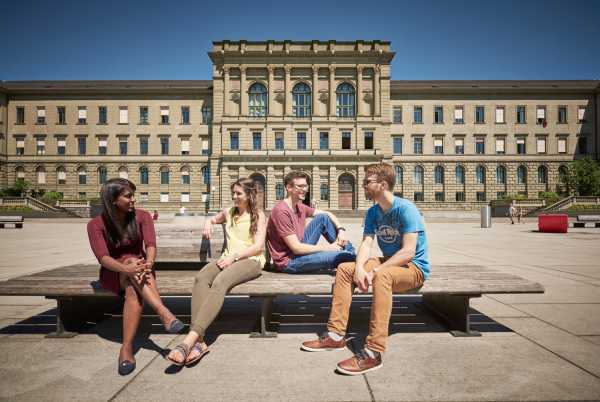 The Polyterrasse is a popular hangout for students. (Photograph: Alessandro Della Bella)
The Polyterrasse is a popular hangout for students. (Photograph: Alessandro Della Bella)
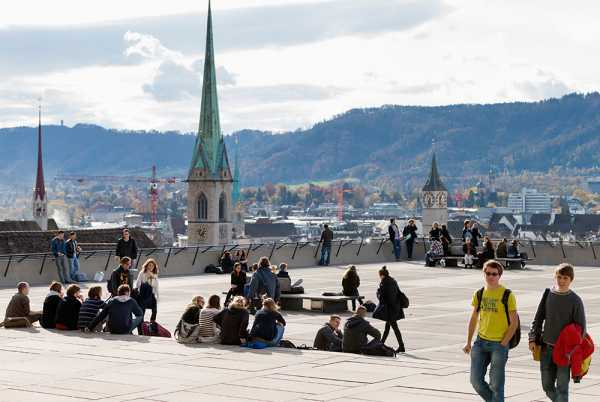 Seat with a view: the LEE roof garden. (Photograph: Fabian Stieger)
Seat with a view: the LEE roof garden. (Photograph: Fabian Stieger) A welcome break: the LEE roof garden. (Photograph: Florian Meyer)
A welcome break: the LEE roof garden. (Photograph: Florian Meyer)
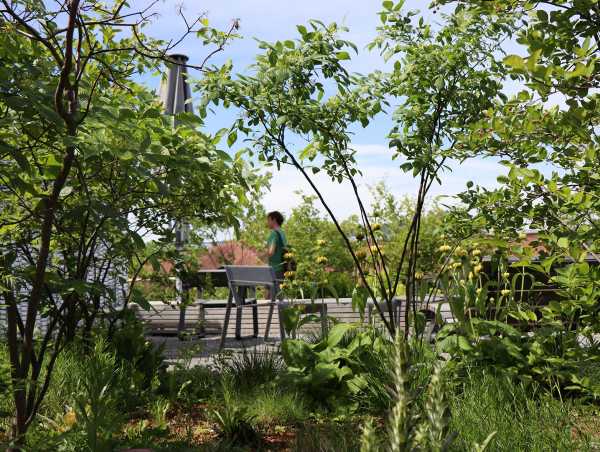 Almost an oasis: gardens and greenhouse by the CHN building. (Photographt: Fabian Stieger)
Almost an oasis: gardens and greenhouse by the CHN building. (Photographt: Fabian Stieger)
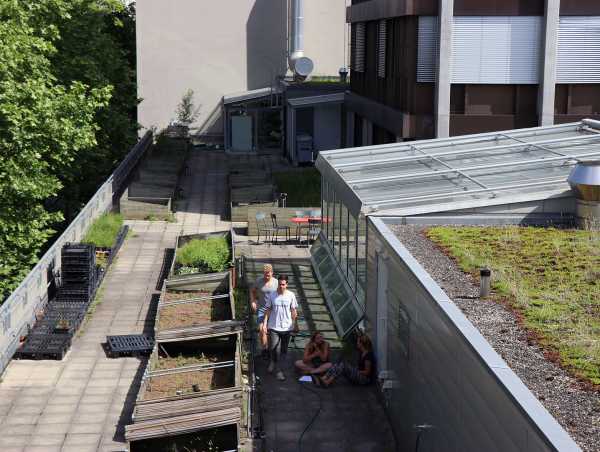 Where studies and free time meet: the CAB courtyard. (Photograph: Florian Meyer)
Where studies and free time meet: the CAB courtyard. (Photograph: Florian Meyer)
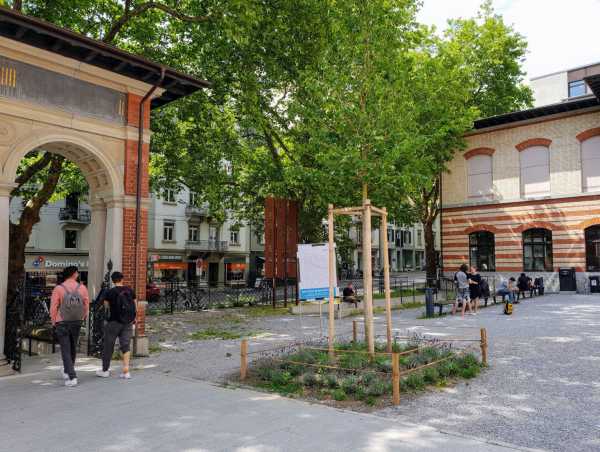 A green belt nestles alongside the H?nggerberg campus. (Photographt: Alessandro Della Bella)
A green belt nestles alongside the H?nggerberg campus. (Photographt: Alessandro Della Bella)
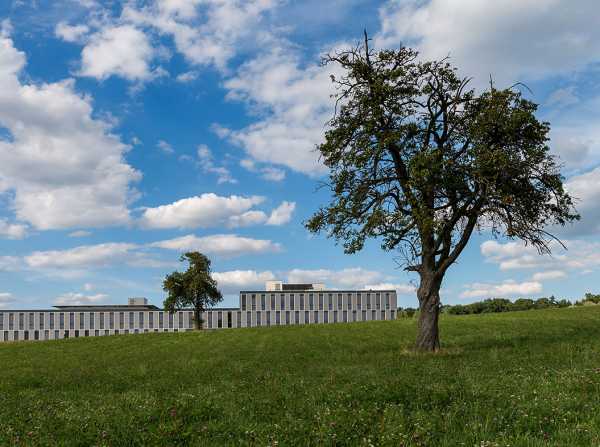 A place to relax: Joseph-von-Deschwanden-Platz. (Photograph: Gian Marco Castelberg)
A place to relax: Joseph-von-Deschwanden-Platz. (Photograph: Gian Marco Castelberg)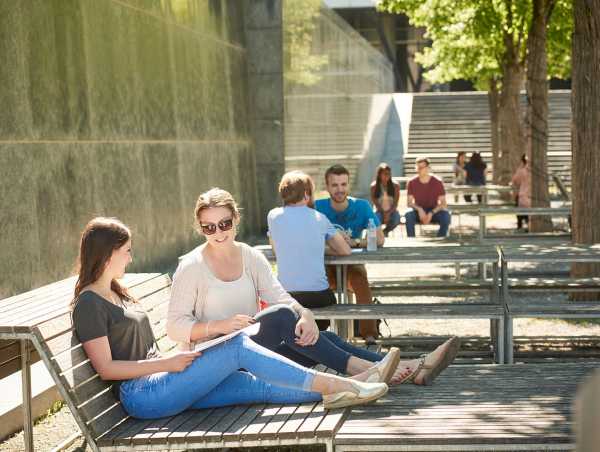 Beautiful: the Alpengarten on the H?nggerberg campus. (Photograph: Fabian Stieger)
Beautiful: the Alpengarten on the H?nggerberg campus. (Photograph: Fabian Stieger)
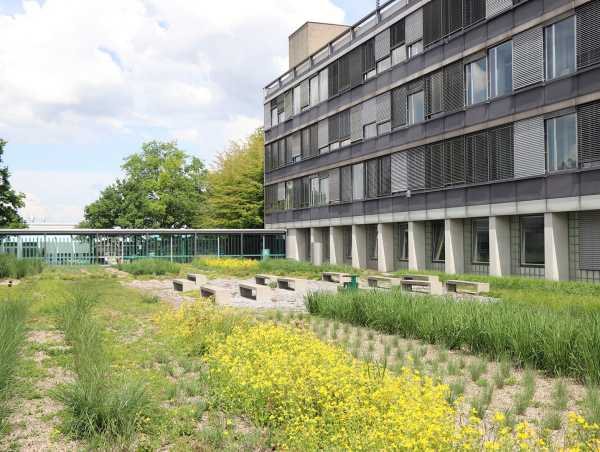 The heart of all ETH Zurich’s gardens: the Albert Steiner Garden. (Photograph: Gian Marco Castelberg)
The heart of all ETH Zurich’s gardens: the Albert Steiner Garden. (Photograph: Gian Marco Castelberg)
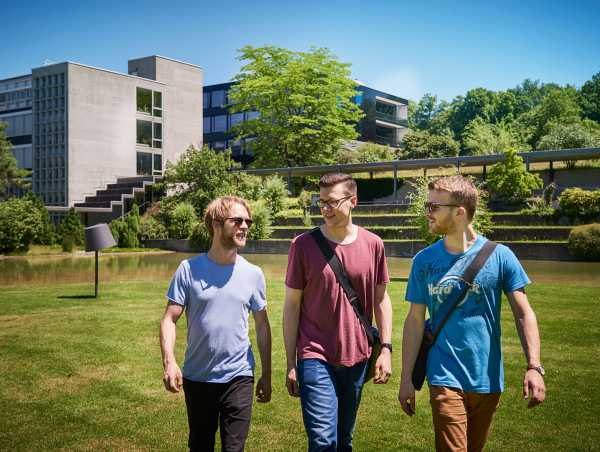 With its own pond: the Albert Steiner Garden. (Photograph: Marco Carocari)
With its own pond: the Albert Steiner Garden. (Photograph: Marco Carocari)
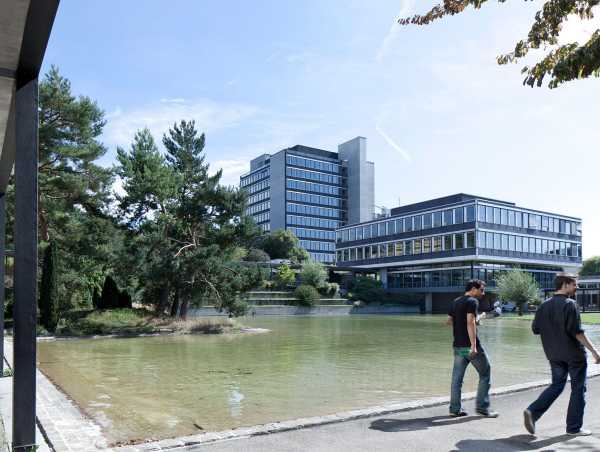 Somewhat hidden, but a dream of a garden: the Flora Ruchat-Roncati Garden. (Photograph: Fabian Stieger)
Somewhat hidden, but a dream of a garden: the Flora Ruchat-Roncati Garden. (Photograph: Fabian Stieger)
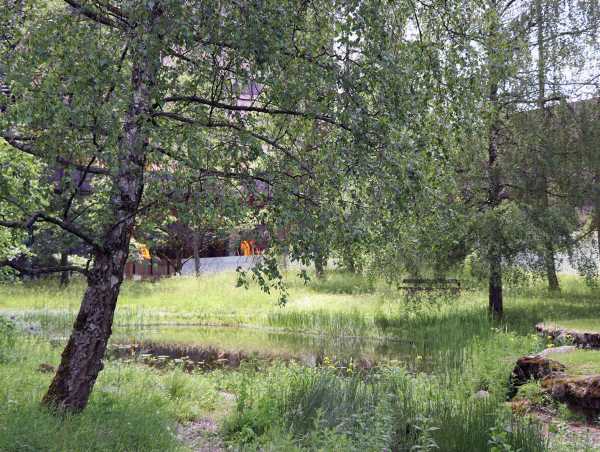 Quiet place to reflect: the ‘Kindlistein’ rock outside the HIT building. (Photograph: Fabian Stieger)
Quiet place to reflect: the ‘Kindlistein’ rock outside the HIT building. (Photograph: Fabian Stieger)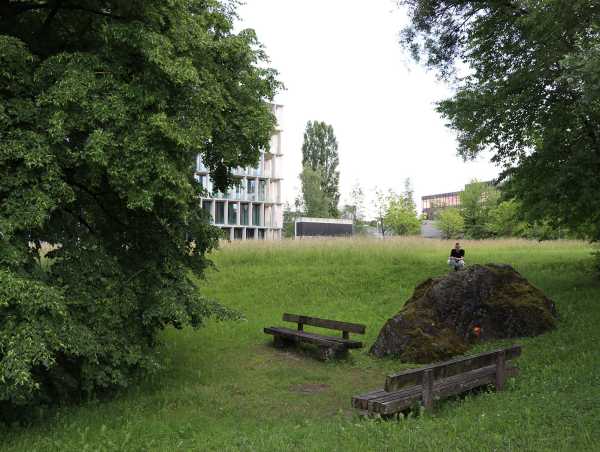 Public squares are part of the modern, urban campus. (Photograph: Gian Marco Castelberg)
Public squares are part of the modern, urban campus. (Photograph: Gian Marco Castelberg)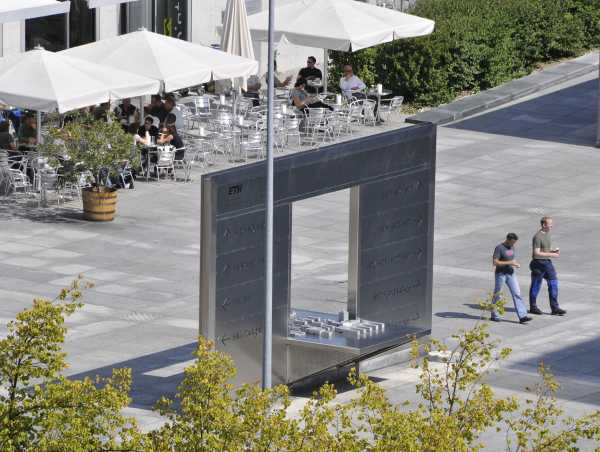 The Enzos create a place to sit, ponder, and relax: the piazza on the H?nggerberg campus… (Photograph: ETH Zurich)
The Enzos create a place to sit, ponder, and relax: the piazza on the H?nggerberg campus… (Photograph: ETH Zurich)
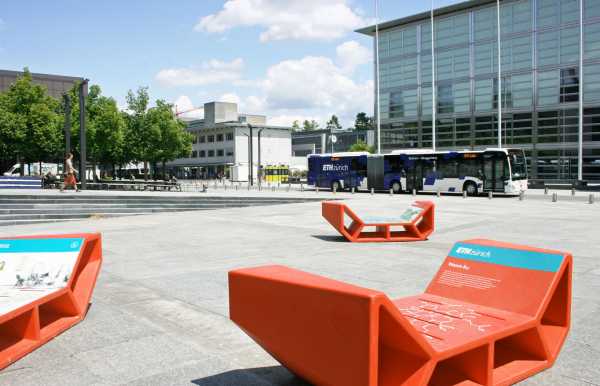 ... and on the Polyterrasse in the evening light, before the sun sets beyond the Old Town and ?etliberg. (Photograph: Florian Meyer)
... and on the Polyterrasse in the evening light, before the sun sets beyond the Old Town and ?etliberg. (Photograph: Florian Meyer)
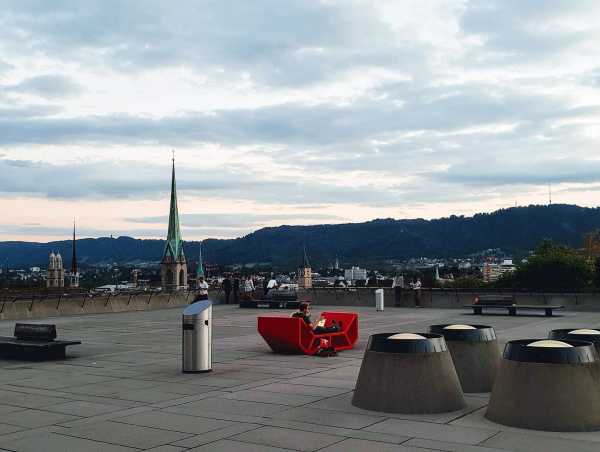 Niches and meeting places for casual conversation between classes: in front of the Department of Biosystems in Basel. (Photograph: Marco Carocari)
Niches and meeting places for casual conversation between classes: in front of the Department of Biosystems in Basel. (Photograph: Marco Carocari)
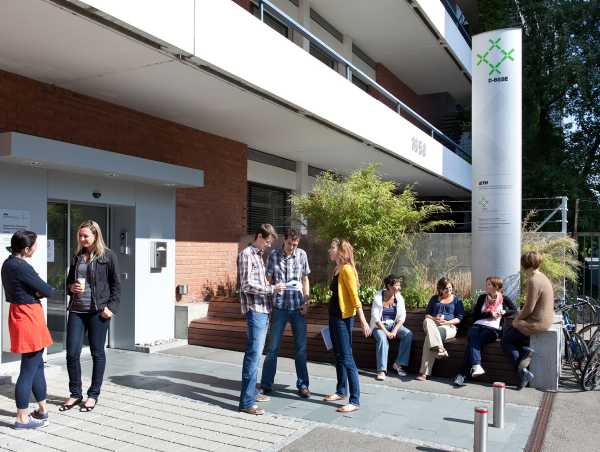
The Polyterrasse and historical gardens
Notable examples of fine urban planning and landscape architecture include:
- Polyterrasse: The now-rectangular viewing terrace with canteens and spaces for sporting activities was built between 1965 and 1978 and is located in front of the ETH main building. It is a popular hangout for students, researchers, and staff. It offers guests and tourists a magnificent view over Zurich, the Limmat, and ?etliberg. It is easy to reach via the Polybahn or on foot.
The tree-lined forecourts around the main building also provide beautiful spots to spend time and retreat to for conversation and relaxation.
- Albert-Steiner-Garten: This spacious garden is located in the oldest part of the H?nggerberg campus, which is a listed architectural treasure, with the physics, biology, and infrastructure buildings dating from the 1960s and 1970s.
The garden consists of a large lawn and a pond used to store water in case of fire, framed by a group of pines and ironwood trees, which together with the shrubs and heath-like ground shrubbery and terraced area give the complex its special character. The garden is a testament to post-war modernist landscape architecture in Switzerland.
The garden is named after Albert Heinrich Steiner (1905–1996), former master architect of the city of Zurich and professor of architecture and urban development at ETH Zurich. He was responsible for the overall planning of ETH Zurich’s H?nggerberg campus from 1957 onwards. The gardens reflect the abstract naturalism of landscape architect Willi Neukom (1917–1983). - Flora-Ruchat-Roncati-Garten: This near-natural garden is a picturesque gem and a secret oasis among ETH Zurich’s green spaces. It is located at the back of the pavilion and is grouped around a precious natural habitat: this pond has an organic shape and its natural shore is surrounded by groups of larches and a gentle grassy hill.
The sparse planting of conifers and grasses gives the garden the feeling of natural heathland. The use of scattered boulders, the Japanese-style stepping stone paths and benches create an open space that naturally stimulates reflection.
The garden is an example of the ecological naturalism produced by the two landscape architects behind the project, Willi Neukom and Hans Epprecht (1917–1980), as well as input from ETH Zurich professor and well-known geobotanist Elias Landolt (1926–2013). It is named after Flora Ruchat-Roncati (1937–2012), an influential architect from the canton of Ticino and the first female professor at ETH Zurich.
Quiet corners for relaxation and reflection
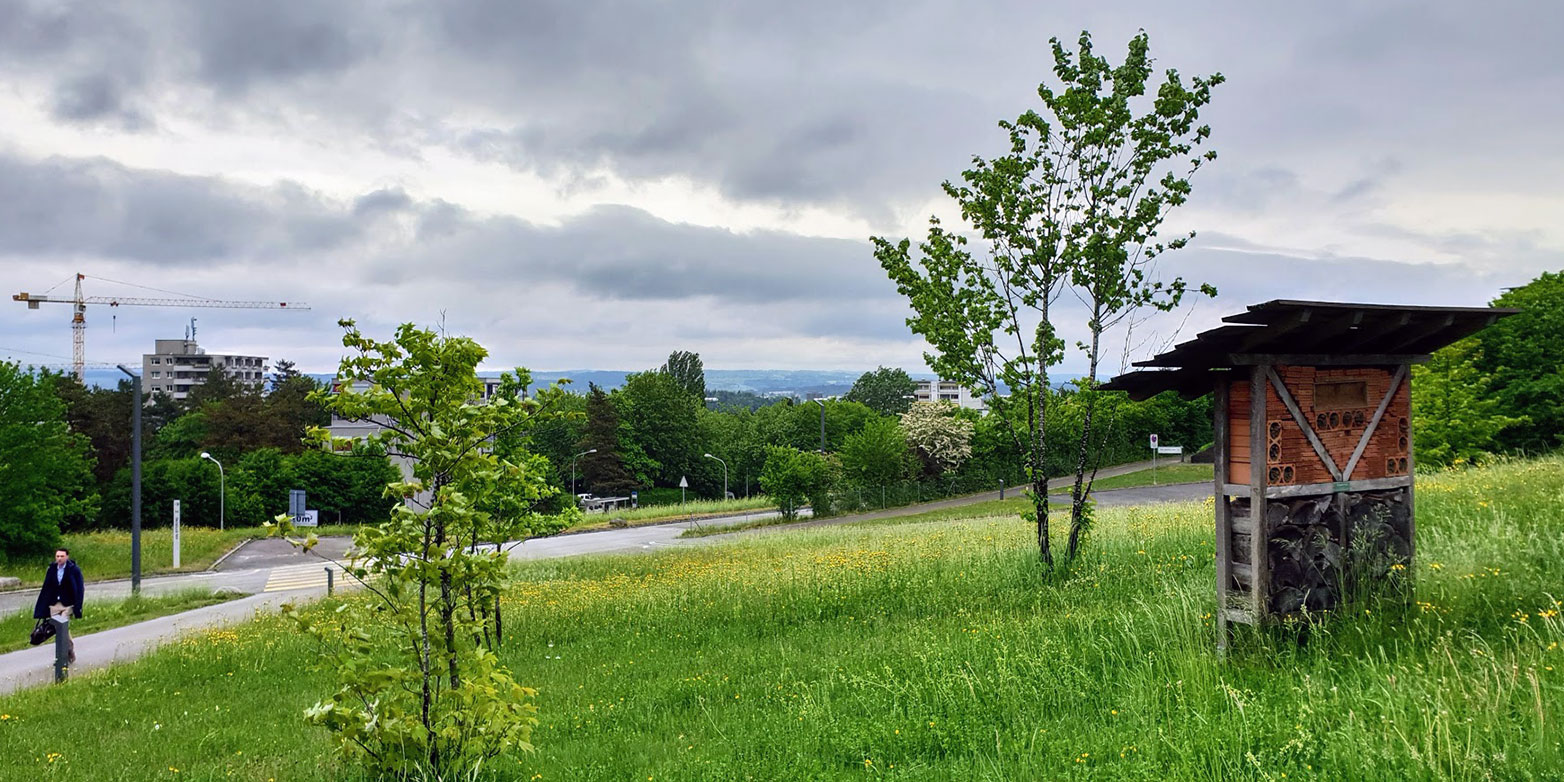
ETH Zurich has a number of additional green and outdoor spaces aside from the gardens, the Polyterrasse, and the central piazza on the H?nggerberg campus: for example, the terrace garden on the HPP building on the H?nggerberg campus, the LEE building’s roof garden, and the greenhouse by the CHN building at Zentrum.
Green corridors, embankments, street spaces with attractive greenery and flowers, forecourts, yards and inner courtyards are often welcoming outdoor spaces. A typical example of this is the CAB building of the Department of Computer Science, which has a forecourt that is often used by students.
Places to relax
Aside from study and research, green corners with seating are great for relaxation and offer the space to reflect on one’s work. In its July 2018 issue, life – the ETH community magazine – presented a selection of five fine places to relax on the Zentrum and H?nggerberg campuses.
Sustainable campus
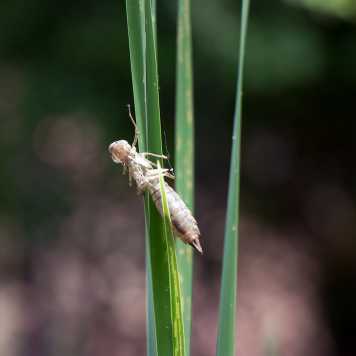
ETH Zurich lives and breathes the principles of sustainable development on its campus across its three dimensions: environment, society, and finance. ETH sees its campus as a ‘real-world’ laboratory, where it develops, implements, and tests innovative solutions designed to protect and conserve natural resources.
For more information see Sustainability.
Experience sustainability
ETH Sustainability, the staff unit for Sustainability, regularly organises excursions to enable people to experience landmark sustainability projects and sustainability research first hand.
For more information see Experience sustainability.
Biodiversity and animal-friendly environments are important aspects of campus design.
For example, since autumn 2015, ETH Zurich has had two gardens at Zentrum and H?nggerberg designed to welcome wild bees (see A safe place for wild bees, Internal news 05.10.2015).
Seed City community garden
The Seed City community garden on the H?nggerberg campus offers an opportunity to actively cultivate a garden. Since its beginning in 2010, an oasis of biodiversity has been created on an area of approx. 1,200 m?, inviting nature-lovers to teach, learn, work, and relax.
The garden is open to everyone at all times. To get involved or find out more, see external pagewww.seedcity.chcall_made (in German).
Maintenance and regeneration of green spaces
The Operations department maintains and regenerates ETH Zurich’s green spaces so that plants, animals, and people can feel at home.
The department’s experts also share their knowledge with all ETH Zurich members.
More information is available at Building services or in the article People, animals and plants. Everyone and everything should feel at home (Internal news 23.07.2015).
Sports and leisure
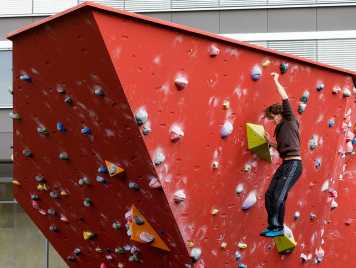
Sports and leisure opportunities can be found at Sports and the ASVZ Sport Center.

